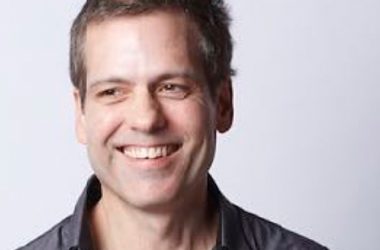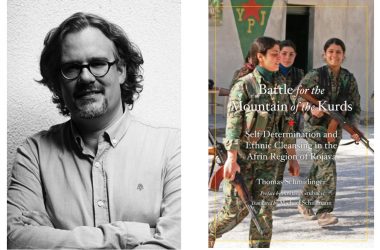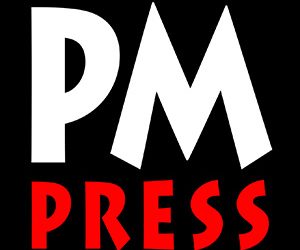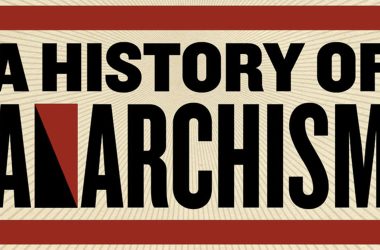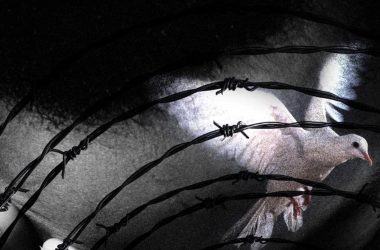A new satirical drawing by Paul Krassner and Mort Gerberg.
By Jonah Raskin
Culture Counter Magazine
January 17th, 2015
Was there ever an American version of Hebdo? Americans are asking themselves these days. Yes, there was. It published on and off from 1958 to 2001. It was called The Realist, though it often ignored the real and ventured into the twilight zone. Its editor was Paul Krassner, who learned a lot from Groucho Marx and Lenny Bruce and who created his own dark sense of humor.
Perhaps America’s oldest living satirist, Krassner never read or even heard of the feisty French publication, Hebdo, until terrorists attacked its Paris office and killed eleven staff members at the start of January 2015 in retaliation, they claimed, for a cartoon of the prophet Mohammed. If he could have, Krassner would have joined the staff and egged it on in a nanosecond.
As the founder of The Realist, which lampooned presidents, popes, and pop culture icons for decades, Krassner acted as an irritant and a provocateur. Later this year he turns 83, but he hasn’t lost his sense of subversive humor and a certain innocence that enables him see the absurdity of the human condition.
“At its best, satire has a truth embedded in the laughter and it can serve to wake people up from their cultural brainwashing,” he told me. “I think satire comes from the heart — it reacts to hypocrisy, contradictions, cruelty, injustice — and then it goes to the head.”
Born in New York in 1932 and a resident now of Desert Hot Springs in Southern California, Krassner has long enjoyed a countercultural connection to the San Francisco Bay Area and to Napa County, where his daughter, son-in-law and granddaughter lived and where he has performed his own provocative brand of stand-up comedy. His Bay Area connections come across loudly and clearly in his most recent book, Patty Hearst & The Twinkle Murders: A Tale of Two Trials (2014) in which he revisits the courtroom dramas that featured Hearst and Dan White and that invited the nation to wonder who and what was real and who and what was unreal and even surreal. For Krassner the dividing line wasn’t obvious.
No terrorists ever assaulted him or attacked the offices of The Realist, but the magazine offended thin-skinned and even thick-skinned Americans during its heyday. Disney threatened to sue because of a two-page spread that depicted Mickey and Minnie Mouse and their friends in a variety of pornographic poses, using drugs. Today it sells well as a color poster. Anything and everything seems to go.
The attack on Hebdo has prompted Krassner to rethink long held ideas and values about satire. It also inspired him to make, with artist Mort Gerberg, a cartoon that shows six hooded, heavily armed men with placards that read, “I am Charlie Manson,” a reference to the placards that read “I’m Charlie” that millions of French citizens carried after the massacre at Hebdo. Nearly the same age as Krassner, Gerberg drew cartoons for The Realist. He now draws them for The New Yorker.
I’ve known Krassner since 1970, when he published, in The Realist, an article I wrote about Eldridge Cleaver, Timothy Leary and their wives. The cover showed the two couples in bed together with the caption, “Eldridge & Tim & Rosemary & Kathleen” — a play on the 1969 movie Bob & Carol & Ted & Alice.
“No one in the 1960s counterculture and in the political movements of those days was offended, at least not for long, by anything I published,” Krassner explained. “They appreciated my brand of satire because they adhered to the eleventh commandment that says, ‘Thou shalt not take thyself too seriously.’”
After all these years, he still doesn’t seem to take himself too seriously, and perhaps not seriously enough, though he observed, “The older I get, the deeper the mystery becomes and the more my priorities fall in place.” He added, “I’m not married to my opinions. I don’t try to persuade people. I just try to understand them. I owe my longevity to the fact that I never took legal drugs. I take life a year at a time. 83 is the new 82.”
When he looks back at American humorists he pays particular homage to Mark Twain, H.L. Mencken and Robert Benchley, who wrote for The New Yorker and whose essays were required reading in college English classes. Krassner also admires the work of Malcolm Muggeridge who edited the British humor magazine, Punch and who had the Brits in stitches, though not the royals. His article entitled “Does England Really Need a Queen?” led to the BBC firing him. Larry Flynt fired Krassner when he was the editor of Hustler, though that was probably for financial reasons, not for the expression of ideas.
Still, like Muggeridge, Krassner offers serious political commentary. Beneath his irreverence, beats a heart that cares about war and peace, lies and truths, conspiracies, abortion, feminism and more.
“The legitimate targets for satire are those who indulge in their power without compassion, such as politicians, police, religious leaders, corporate executives and prison-guard unions,” he said. “Pick a dangerous bully, any dangerous bully, and pick on him.”
He added, “Free speech demands a sense of irresponsibility. It’s a personal choice for me to be responsible to myself and to my audience that trusts me not to be afraid of offending them. Of course, if I step on their toes, then they might feel that I’ve gone too far.”
At The Realist, Krassner stepped on the biggest of toes, including those of President LBJ whom he suggested practiced necrophilia with the body of JFK after his assassination in Dallas. Nobody firebombed his office or tried to assassinate him, though Americans in all walks of life felt he had gone way too far.
These days he seems to agree with them, at least in part. “My slogan for The Realist used to be ‘Irreverence is our only sacred cow,’ but I’ve had second thoughts about that,” he said. “Irreverence has become an industry and can become irreverence for its own sake, and often mean-spirited stereotypes are published in the guise of satire.”
On the cusp of 83, a kinder, gentler Krassner has emerged, though he remembers fondly his days at the helm of The Realist when he made fun of the global hi-jinks during 1962 Cuban missile crisis, nuclear apocalypse and gays in the military.
“The magazine was a mixture of controversial journalism and satire, but not labeled either way so that readers had to discern for themselves whether an article was literally true or a metaphorical extension of the truth,” he said.
Would he have published in The Realist the controversial cartoon of Mohammed that appeared in Hebdo? “Yes, I would have,” he said. “I thought it was funny. It made me laugh. It made me think.”


